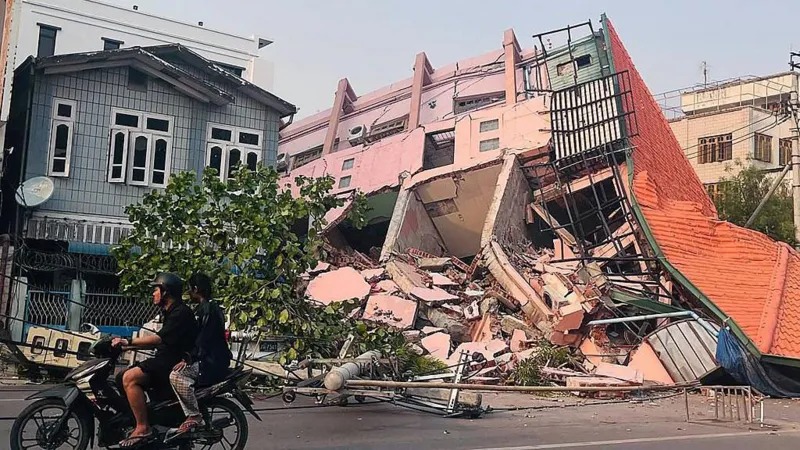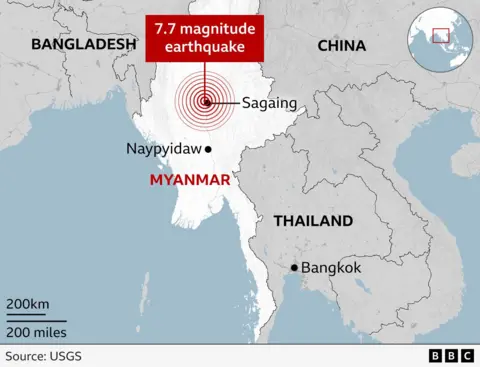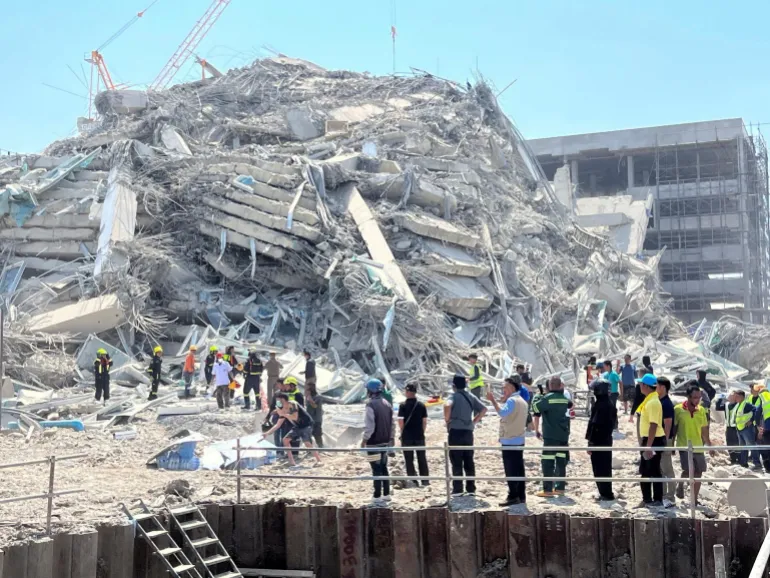Latest News
Josh Inglis 120* seals record win for Australia

Ben Duckett provided the ruthlessness England so desperately craved with a record knock of 165. But his heroics went in vain as Josh Inglis countered by pummeling a lackluster England pace attack and powering Australia to the highest successful chase in men’s ICC tournament history.
The first match at an ICC event in Lahore since March 1996 saw batting completely dominate this Champions Trophy blockbuster with little margin for error for the bowlers on such a benign surface.
With a mixture of inventive strokes and meaty backfoot blows, England-born Inglis hit his maiden ODI century to finish unbeaten on 120 from 86 balls as Australia reached the target of 352 with relative ease in the 48th over. England’s bowlers struggled to handle the dew under lights, with Australia achieving their second-highest successful ODI chase after their 359 for 6 against India in Mohali in 2019.
It was a bitter disappointment for England, who now face must-win games against Afghanistan and South Africa. They ultimately will rue falling a little bit short with the bat, but Duckett’s magnificent 165 off 143 was the highest individual score in Champions Trophy history. He received strong support from Joe Root, who made a crisp 68 in a third-wicket partnership of 158.
Even though no other batter scored more than 25 runs, England still compiled the highest-ever total in the tournament and took full toll on the least experienced Australian attack at an ICC ODI event since 1983. They were without frontline quicks Pat Cummins, Josh Hazlewood and Mitchell Starc, while seam-bowling allrounders Cameron Green, Mitchell Marsh and Marcus Stoinis are also missing.
However, the result was not a fait accompli on this flat surface, with Australia boasting a deep batting line-up. Australia’s innings mirrored England’s with two early wickets after Travis Head and stand-in captain Steven Smith fell in the powerplay.
Having blazed an unforgettable century the last time he was sighted at a 50-over ICC event, Head loomed as the key but on 6 his swipe hit the toe-end of the bat and Jofra Archer held a sharp return catch.
Smith could only edge to slip a hard-length delivery from speedster Mark Wood, who was in great rhythm and consistently hitting speeds of 150 kph. But Mathew Short and Marnus Labuschagne rallied with a 95-run stand as they took a particular liking to wayward quick Brydon Carse.
Short overcame a lean run of form by superbly using the pace of England’s quicks but legspinner Adil Rashid bowled a brilliant spell in combination with Liam Livingstone that squeezed the batters.
A frustrated Labuschagne hit a slow 70 kph legbreak from Rashid straight to cover before Short on 63 offered a return catch to Livingstone as Australia slumped to 136 for 4.
But Rashid was taken out of the attack after his six-over spell, allowing Inglis and Alex Carey to settle. The pair showcased their strong form having each scored counterattacking Test centuries against Sri Lanka as they got on top of a struggling England pace attack.
Carey sheepishly celebrated his half-century after hitting Rashid straight to deep midwicket only for Archer to drop a sitter. Inglis then whacked Archer for consecutive boundaries as the wheels started to come off for England.
Just as Australia started to gain control, Carey hit Carse straight to mid-off with 70 still needed off 50 balls. But Inglis was unperturbed and mowed a six off Archer to reach his century in style.
Glenn Maxwell was unstoppable before Inglis fittingly sealed victory with a six in a terrific victory for World Cup champions Australia, whose title hopes ahead of the tournament had largely been written off.
Smith elected to bowl after being swayed that dew would play a factor under lights as Australia stepped onto the field at an ICC event without their big three quicks for the first time in nine years.
Australia’s considerably weakened attack was under immediate pressure on a road of a pitch. There was no Starc, but Australia were not short on aggressive left-arm quicks with Spencer Johnson, whose trademark golden locks had been shorn off, and Ben Dwarshuis handed the new ball.
Dwarshuis was selected ahead of Sean Abbott, who had played in both of Australia’s ODI games in Sri Lanka, for match-up reasons although his two early wickets were mostly due to rash strokes.
England’s reshuffled batting line-up didn’t go to plan initially. In a common bane for them, they went a bit hard early with Phil Salt falling in the second over after falling to clear the on-side as a high-flying Carey plucked a one-handed blinder of a catch to his right.
It was a spectacular first-ever ODI catch for Carey as an outfielder and helped justify the decision for Inglis, the incumbent white-ball wicketkeeper, to retain the gloves.
All eyes were on Jamie Smith, who batted at No. 3 for the first time in international cricket – and only the second time in his List A career – in a decision that forced Root, Harry Brook and Jos Buttler to shift down from their usual positions.
Smith stroked a couple of gorgeous cover drives, before falling tamely to the on-side where Carey took a far easier catch on this occasion.
England did not envision being 43 for 2, but they recovered quickly as Duckett and Root cashed in on errant bowling from Johnson and Dwarshuis. Duckett had started relatively slowly, but blasted a boundary off the last delivery of the powerplay as England moved to 73 for 2.
Smith reverted to spin after the restrictions were eased but there was little turn on offer as Duckett and Root easily rotated the strike. Smith was fairly conservative with his tactics and deployed four sweepers.
Duckett showcased his improved prowess of hitting down the ground by targeting Maxwell straight and he reached his half-century in style with a horizontal bat shot off Johnson.
Root was making it look easy, not fussed about hitting boundaries but smartly working the gaps to reach his half-century off 56 balls. He had a perfect opportunity to end a long ODI century drought stretching to the 2019 World Cup as England eyed a total in the high 300s.
But Root got tied down by legspinner Adam Zampa, was was in the midst of a good spell, and missed a rare attempted sweep to fall in a tight lbw after an unsuccessful review. Australia fought back through Zampa, whose subtle variations proved effective and accounted for Brook with Carey taking another terrific catch after a diving effort running backward at point.
Seamer Nathan Ellis also utilised his noted defensive skills and conceded just 51 runs off his 10 overs – the only bowler with an economy of under six.
England feared letting slip a great platform just like they did against Australia at Trent Bridge last September. But Duckett held things together and blasted consecutive boundaries off Johnson to reach his third ODI century.
He punched the air in celebration, but did not waver in his concentration despite being clearly fatigued. Duckett’s brilliant innings finally ended in the 48th over when he was trapped lbw by the legspin of Labuschagne, who was preferred over Johnson at the death and finished with 2 for 41 off five overs.
Archer hit a flurry at the death, but his mood soured later in the night.
Brief scores:
Australia 356 for 5 in 47.3 overs (Josh Inglis 120*, Alex Carey 69, Mathew Short 63, Marnus Labuschagne 47, Adil Rashid 1-47, Liam Livingstone 1-47) beat England 351 for 8 in 50 overs (Ben Duckett 165, Joe Root 68, Jos Buttler 23, Jofra Archer 23*; Ben Dwarshuis 3-66, Marnus Labuschagne 2-41, Adam Zampa 2-64) by five wickets
[Cricinfo]
Latest News
Over 150 dead in Myanmar and Thailand after huge earthquake

A huge 7.7 magnitude earthquake has hit central Myanmar, according to the United States Geological Survey (USGS).
At least 144 people have died and 732 have been injured so far in the country, Myanmar military leader Min Aung Hlaing said.
The epicentre was 16km (10 miles) north-west of the city of Sagaing, sending strong tremors that were felt as far as south-west China and Thailand.
Meanwhile, around 100 construction workers are missing after an unfinished high-rise building collapsed hundreds of miles away in Bangkok, according to Thailand’s deputy prime minister.
At least seven people have died at the site in Thailand, according to the Bangkok Metropolitan Administration.
A rescuer in Mandalay, Myanmar’s second-largest city, told the BBC the damage is “enormous”.
The total number of people killed and injured by the earthquake are expected to rise in the coming days.
There have been reports of roads buckling in the capital of Nay Pyi Taw, and the country’s military government has declared a state of emergency in six regions.
The earthquake struck near Mandalay, which has a population of about 1.5 million people.
A second quake struck 12 minutes after the first, according to the USGS, with a magnitude of 6.4 and its epicentre was 18km (11.1 miles) south of Sagaing.
Myanmar, formerly known as Burma, gained independence from Britain in 1948, but its recent history has been marked by unrest and conflict.
The military seized power in 2021, ten years after agreeing to hand over control to a civilian government. Since then, the junta has cracked down hard on dissent, executing democracy activists and jailing journalists. The state controls almost all local radio, television, print and online media, and Internet use is restricted in the country, which often makes access to information difficult.
According to a recent BBC data project, the country is now controlled by a patchwork of groups, making relief and recovery efforts more challenging.
It is even harder to find accurate information about what is going on in rebel-held areas of the country.
The junta made a rare call for international assistance in the wake of the earthquake.

However, the complex situation on the ground is likely to hamper search and rescue operations as well as the free flow of aid into the country.
Rescue workers operating in villages near Mandalay have told the BBC they do not have access to the heavy machinery needed to reach people trapped under the rubble. “We’re digging people out with our bare hands,” one man said.
The earthquake has added pressure to an already dire humanitarian situation in the country, where 3.5m people are estimated to have been displaced by fighting.
The Sagaing region, near the epicentre of the quake, is a volatile key battleground in the civil war.
Charities and opposition parties working in the country have raised concerns about the “politicisation” of aid in the coming days.
Montse Ferrer, the deputy director of East and Southeast Asia and the Pacific at Amnesty International, told the BBC the junta has “a history of denying aid” to areas where resistance forces are active.
The tremors were felt hundreds of miles away in Thailand’s capital of Bangkok, where rescue teams worked through the night to free the construction workers trapped beneath the rubble.
Buildings across the city were evacuated, including a hospital holding patients in acute need of medical attention. A woman gave birth on the street amid the commotion, lying on a stretcher surrounded by hospital staff.
Bui Thu, a BBC journalist who lives in Bangkok, told the BBC World Service’s Newsday programme that she was at home cooking when the initial quake happened. “I was very nervous, I was very panicked,” she said.
“Buildings in Bangkok are not engineered for earthquakes, so I think that’s why I think there’s going to be big damage.”
Thailand’s Prime Minister Paetongtarn Shinawatra visited the site of the collapsed building on Friday afternoon.
Search and rescue teams using drones, sniffer dogs and diggers have been mobilised and disaster centres set up to help with the rescue operation.
Latest News
IPL 2025: Patidar, bowlers lead Royal Challengers Bengaluru to first win over Chennai Super Kings in Chennai since 2008

Royal Challengers Bengaluru (RCB) ended their Chennai jinx in style, beating Chennai Super Kings (CSK) there got the first time since the first IPL – by a whopping 50 runs, CSK’s biggest defeat at home. The contest was so dead that more than half of CSK’s chase was all about finding out if and when MS Dhoni would bat. He eventually did so at No. 9, only for the second time in his career.
The build-up was all about how RCB would tackle 12 overs of spin, but the conditions rolled out inverted the spotlight: how would CSK handle eight overs of traditional seam and swing from Bhuvneshwar Kumar and Josh Hazelwood? Not very well, as their combined figures of 7-0-41-4 demonstrated.
And that after RCB’s batters dominated the CSK attack on what was not a straightforward pitch. Like Hazlewood and Bhuvneshwar, Khaleel Ahmed drew seam movement and extra bounce, but CSK didn’t have any more such bowlers. Rajat Patidar led RCB’s innings, full of intent, capitalising on a dropped catch when he was on 17, and finishing with 51 off 32 balls. Ravichandran Ashwin and Ravindra Jadeja were allowed to bowl only five overs, which were taken for 59 runs.
Khaleel drew some seam movement and uneven bounce in the first over, but CSK hadn’t planned for such conditions. They don’t have quick bowlers who can hit the good length and just short. They were going to open with Ashwin, and they did. Only for the first ball to not come out right and for Phil Salt to pull him for a six. The over went for 16, forcing the early introduction of Noor.
On his way to the Purple Cap, Noor and Dhoni recreated a lightning stumping to get rid of Salt for 32 off 16 balls, but Devdutt Padikkal denied them any relief. The left-hand batter took down Jadeja in ways Jadeja is not accustomed to: a sweep and a charge down the wicket to consign him to a 15-run first over.
When Ashwin got Padikkal out for 27 off 14 deliveries, CSK would have hoped to re-establish control. But the presence of Patidar meant they were not able to bowl spin at Virat Kohli, who struggled to achieve even a run a ball. Patidar took a six off Noor the moment he overpitched. Kohli, playing Matheesha Pathirana for the first time, took 16 runs off his second over, and RCB were 109 for 2 in 11 overs.
Like Ashwin earlier, Jadeja nearly had his own back when he drew a mis-hit from the enterprising Patidar, but Deepak Hooda dropped a sitter at long-off. In the next two overs, Patidar offered three half-chances, but none of them was taken. Kohli’s offering was taken, though, and the pressure on Liam Livingstone, and eventually his wicket, reduced RCB to 145 for 4 in the 16th over.
RCB kept the intent up, though, and Jitesh Sharma hit the second ball he played for the shot of the match, an inside-out drive off a Noor wrong’un over extra cover for six. Patidar played a delectable pick-up shot off a Pathirana slower ball in the next over. This 27-run stand in 13 balls gave RCB the impetus they needed before the death overs.
In the death overs, though, both fell, even resulting in just one run off the 19th over, bowled by Pathirana. However, Tim David took them 20 past what CSK believed to be par with three sixes in the last over, bowled by Sam Curran, who has now bowled four overs for 47 runs in two matches.
Hazlewood got Rahul Tripathi and Ruturaj Gaikwad in his first over with steep bounce, and Bhvuneshwar took his 73rd powerplay wicket when he nicked off Hooda.
Dhoni kept teasing his fans by batting after Jadeja and Ashwin. Yet there were 4.4 overs left when he walked out to bat at No. 9. Only in the last two overs did he get some hits in, but couldn’t avoid a record home defeat.
Brief scores:
Royal Challengers Bengaluru 196 for 7 in 20 overs (Rajat Patidar 51, Phil Salt 32, Virat Kohli 31, Devdutt Padikkal 27, Liam Livingstone 10, Jitesh Sharma 12, Tim David 22*; Khaleel Ahmed 1-28, Ravichandran Ashwin 1-22, Noor Ahmad 3-36, Maheesha Pathirana 2-36) beat Chennai Super Kings 146 for 8 in 20 overs (Rachin Ravindra 41, Shivam Dube 19, Ravindra Jadeja 25, Ravichandran Ashwin 11, MS Dhoni 30*; Bhuvneshwar Kumar 1-20, Josh Hazlewood 3-21, Yash Dayal 2-18, Liam Livingstone 2-28) by 50 runs
[Cricinfo]
Latest News
Two powerful earthquakes kill several, trap dozens in Myanmar, Thailand

Magnitude 7.7 and 6.4 earthquakes have struck Myanmar, killing at least three in Thailand’s capital Bangkok and trapping dozens others after an under construction building collapsed.
The first tremor hit 16km (10 miles) northwest of the city of Sagaing at a depth of 10km (6 miles) at about 12:50pm (06:20 GMT) on Friday, the United States Geological Survey (USGS) said.
Myanmar’s ruling military declared a state of emergency in six regions and states. “The state will make inquiries on the situation quickly and conduct rescue operations along with providing humanitarian aid,” it said on the Telegram messaging app.
A major hospital in Naypyidaw was declared a “mass casualty area”, an official at the facility told AFP news agency. Rows of wounded were treated outside the emergency department of the 1,000-bed general hospital, some writhing in pain, others lying still as relatives sought to comfort them.

According to two witnesses from the town of Taungnoo in Bago region who spoke to Reuters news agency, at least three people died after a mosque partially collapsed. “We were saying prayers when the shaking started … Three died on the spot,” one of them said.
Al Jazeera’s Tony Cheng reporting from Naypyidaw said he was outside Myanmar’s Defence Services Museum when the earthquake hit, right after interviewing a government spokesman. “We’d just stepped outside to say goodbye when things started shaking,” Cheng said, adding he and others sought shelter under a doorway as large roofing and side panels crashed down.
The tremors began gently but quickly intensified, causing concrete panels to break off the building, Cheng noted. “I’ve been in earthquakes in this region before, and I’ve never felt anything as strong as that,” he said. “We have felt a considerable number of aftershocks. It put everybody here on edge.”
Social media posts from Mandalay, Myanmar’s ancient royal capital that is at the centre of its Buddhist heartland, showed collapsed buildings and debris strewn across streets of the city.
A witness in the city Htet Naing Oo told Reuters that a tea shop had collapsed with several people trapped inside. “We couldn’t go in,” she said. “The situation is very bad.”
Marie Manrique, programme coordinator for the International Federation of the Red Cross said to reporters in Geneva, via video link from Yangon that the organisation anticipates the impact to be “quite large”.
“Public infrastructure has been damaged including roads, bridges and public buildings. We currently have concerns for large scale dams that people are watching to see the conditions of them”, she said.
Skyscraper collapses in Bangkok
In neighbouring Thailand’s capital Bangkok, at least three people were killed when a 30-storey under-construction tower collapsed, Thailand’s Deputy Prime Minister Phumtham Wechayachai announced. He added that 81 people were trapped under the rubble of the building.
Al Jazeera’s Imran Khan who was in the city when the earthquakes struck, said the entire public transport system has been shuttered for safety reasons.
“People are out on the streets here. None of the trains are moving,” he reported. “Traffic is absolutely gridlocked. The buildings have been shuttered in the centre of the city.”

Thai Prime Minister Paetongtarn Shinawatra announced a state of emergency in her country. Meanwhile, Bangkok has been declared a disaster area, the capital’s city hall said on Friday.
Urban rail systems in Bangkok were temporarily closed but expected to resume services on Saturday.
The earthquakes were also felt in the Yunnan and Sichuan provinces in China, causing injuries and damage to houses in the city of Ruili on the border with northern Myanmar, according to Chinese media reports.
Videos that one outlet said it had received from a person in Ruili showed building debris littering a street and a person being wheeled on a stretcher towards an ambulance.
Cambodia, Bangladesh and India also reported tremors.
Previous quakes in Myanmar
Earthquakes are relatively common in Myanmar, where six strong quakes of 7.0 magnitude or higher struck between 1930 and 1956 near the Sagaing Fault, which runs north to south through the centre of the country, according to the USGS.
A powerful 6.8-magnitude earthquake in the ancient capital Bagan in central Myanmar killed three people in 2016, also toppling spires and crumbling temple walls at the tourist destination.
The impoverished Southeast Asian nation has a strained medical system, especially in its rural states.
Moreover, Al Jazeera’s Cheng said it was important to remember that Myanmar was a country currently in the grips of a bitter civil war.
“A lot of the people have moved from the countryside into the cities to try and escape,” he noted. “That has meant it is densely overcrowded and the building standards are not particularly strong.”
[Aljazeera]
-

 News7 days ago
News7 days agoSeniors welcome three percent increase in deposit rates
-

 Features7 days ago
Features7 days agoThe US, Israel, Palestine, and Mahmoud Khalil
-

 News7 days ago
News7 days agoScholarships for children of estate workers now open
-

 Foreign News5 days ago
Foreign News5 days agoBuddhism’s holiest site erupts in protests over Hindu ‘control’ of shrine
-

 News7 days ago
News7 days agoJapanese Defence Delegation visits Pathfinder
-

 Features4 days ago
Features4 days agoCelebrating 25 Years of Excellence: The Silver Jubilee of SLIIT – PART I
-

 Editorial6 days ago
Editorial6 days agoWhen tractors become cars!
-

 Business2 days ago
Business2 days agoAIA Higher Education Scholarships Programme celebrating 30-year journey












